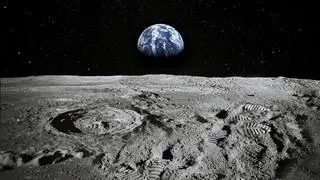Global warming that we experience today can make Indian monsoon more extreme and erratic.
A team of international researchers studying the behaviour of the monsoon during the previous interglacial period — the period between two glacial epochs, similar to what the earth is going through now — found that the cyclical weather phenomenon was long, more extreme and unreliable than it is today.
“Our data show that the Indian monsoon was less reliable in the last interglacial period than it is today, which suggests that global warming today might be having the same effect,” said Ola Kwiecien, a geoscientist with Ruhr-Universität Bochum in Germany, and the co-author of a study that appeared in the journal Geophysical Research Letters recently. The corresponding author of the study was Matthias Magiera, an earth scientist with the University of Oxford.
The scientific community has keen interest in understanding more about the weather and climate phenomena during the last interglacial period because it can provide them with clues on how the climate might behave as the earth warms up.
If their findings are correct, the scientists presume that there may be perceptible changes in the behaviour of the monsoon in the next 20 to 30 years.
“The last interglacial period is often considered an analogy to the expected climate changes, even though the factors that led to the warming were different then than they are today,” said Kwiecien in a statement.
Apart from RUB scientists, their counterparts from China, New Zealand, the UK and the US participated in the study.
Reconstructing changes in precipitation
For the study, the geoscientists analysed a dripstone found in Mawmluh Cave in Meghalaya. First, the researchers determined the ratio between two types of oxygen atoms — heavier oxygen atom with an atomic weight of 18 and lighter, also more common, one with an atomic weight of 16 — in the dripstone.
This value, called delta-18-O, depends on the source area of the monsoon on one hand, but also on the seasonal distribution of rainfall, temperature and intensity of precipitation. These factors play an important role for the strength of the monsoon weather phenomenon.
“The delta-18-O value tells us something about the strength of the monsoon, but not how much precipitation falls and how the rain spreads over time,” explained Sebastian Breitenbach from the RUB Institute of Geology, Mineralogy and Geophysics.
So, to gather clues on the seasonal distribution of rainfall, the researchers turned to other parameters.
They chose one determines the ratio of different elements such as strontium or magnesium to calcium or the ratio of different calcium isotopes in the dripstone. This isotope ratio, known as the delta-44-Ca value, has so far rarely been applied to cave samples in the past, the scientists claimed.
During dry winter and long dry periods, a phenomenon occurs in the limestone rocks above the cave that affects the elemental conditions in the dripstone.
If rain falls over the cave, it seeps through the soil, dissolves calcium from the rock and transports it into the cave. The calcium is stored in a dripstone formed by the water — the dripstone grows during a moist phase — thus has a high calcium content compared to other elements.
However, during the dry period between November and May, some of the calcium can get lost on the way, if there are any air-filled cavities in the rock. These cause the calcium to precipitate before it reaches the cave, while elements such as strontium and magnesium remain in the water, are transported to the dripstones and integrated into them.
The ratio of magnesium or strontium to calcium in the dripstone thus indicates whether there was much or little rain in the immediate vicinity of the cave.
The delta-44-Ca value also provides clues on the precipitation near the cave and allows researchers to gain more information on the intensity of the dry phase.
The combination of these different parameters enabled the researchers to reconstruct changes in precipitation during the monsoon and non-monsoon periods and consequently, to gain insight into the distribution of precipitation before, during and after the last interglacial period.








Comments
Comments have to be in English, and in full sentences. They cannot be abusive or personal. Please abide by our community guidelines for posting your comments.
We have migrated to a new commenting platform. If you are already a registered user of TheHindu Businessline and logged in, you may continue to engage with our articles. If you do not have an account please register and login to post comments. Users can access their older comments by logging into their accounts on Vuukle.